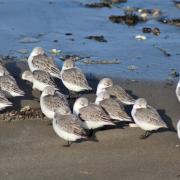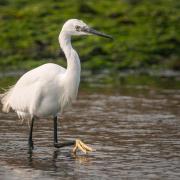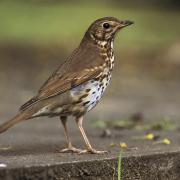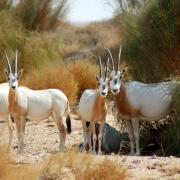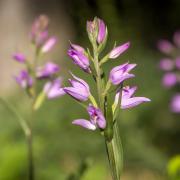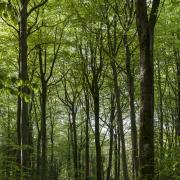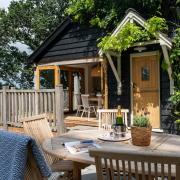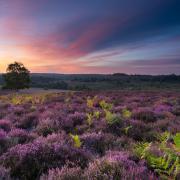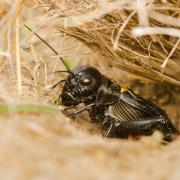Staying at home has meant the natural world has reasserted its presence. As more of us celebrate the pleasure this brings, VIV MICKLEFIELD takes inspiration from one Hampshire reserve

North east Hampshire might not be the first place which springs to mind when thinking of basking reptiles, rare marsh flora and fauna, and a chorus of birdsong to make the heart sing. Yet Hook Common and the adjoining Bartley Heath nature reserve has all these and more. Demonstrating that even in semi-rural areas - and here we’re talking greenbelt being gobbled-up for development and major transport networks on the doorstep - if the habitat is right, then some of our most beloved wildlife will make it their home.
During the summer months lizards and Great Crested Newts are among those soaking-up the rays; Marsh Gentian with their blue, trumpet-shaped flowers burst into bloom; fleeting flashes of brilliant colour signal Purple Emperor butterflies feeding among the treetops as squadrons of dragonflies swoop over rippling pools; whilst as dusk falls, the drumming of the Lesser Spotted Woodpecker is supplanted by the Nightjar’s distinctive churring filling the air.
The 123 hectare reserve is today managed by Hampshire and Isle of Wight Wildlife Trust (HIWWT). A designated Site of Special Scientific Interest, open heathland and ancient woodland pasture which once dominated much of the county, continues to be carefully preserved despite 21st century pressures. And along with grassland, and wetland areas created from flooded former gravel pits, these provide ample opportunities for those get-away-from-it-all moments of relaxation or nature spotting. As we all spend much more time in our own, private green spaces we can take inspiration from sites such as Hook Common and Bartley Heath and entice some new species into our own gardens.

Bring back the butterflies
By providing food for caterpillars and nectar-rich plants for butterflies, a colourful fluttering will soon find its way into your green spaces. A flower border sown with cottage garden favourites such as Nasturtium attracts the Green-veined White, and Honesty the Orange-tip.
It’s also worth letting a few weeds grow-up, such as nettles for the Peacock and the Small Tortoiseshell, or, a patch of thistles for the Painted Lady. And don’t be too hasty to hack back ivy; as well as attracting the Holly Blue, it also provides somewhere for many different caterpillars and butterflies to overwinter.

Watery worlds
Even a small pond can become a home to damsel and dragonflies, frogs and newts, as well as providing a feeding ground for natural predators including birds, hedgehogs and bats. Any old container, from a washing-up bowl to a large plant pot, or disused sink, can be repurposed. Your pond will want light, but not full sunlight all day, and can either be sunk into a hole in the ground, or left sitting on top. If the container isn’t watertight, then add a piece of pond liner. Add a layer of gravel and rocks, then use logs or stones to create a range of depths and a slope for creatures to climb in and out. If your container isn’t sunk-in, place a ramp from the ground outside. Fill your pond ideally with rainwater, followed by a miniature water lily such as Nymphaea “Pygmaea Helvola” (water depth 10-30cm), or a flowering rush such as Butomus umbellatus (water depth 5-15cm), and a submerged plant such as Hornwort.
If there’s space for a bigger, sunken pond this can become one of the single best features for attracting wildlife into a garden.

Reptile (and amphibian) retreat
Frogs, toads, lizards and grass snakes may already have discovered your garden, especially if there’s a pond or compost heap. So creating a hibernaculum for them to safely shelter through the winter chills will see many emerge the following year. First find a sunny spot before digging a hole, roughly 50cm deep and 1.5m wide, using a spade. Pile this hole full of pile of logs, branches, bricks and rocks, leaving lots of gaps in-between. Insert entrance tubes such as short lengths of drainpipe at ground level covering the pile with soil to around 50cm high. Meadow flower seeds or long grasses planted over the mound will attract pollinating insects.
Fact sheets for all these wildlife friendly projects, plus lots of other ideas, including making a bird box and attracting more bees into your garden, can be found at hiwwt.org.uk/actions.
The Wildlife Trusts and the Royal Horticultural Society has also launched a campaign to encourage us to act for nature. For details go to wildaboutgardens.org.uk






